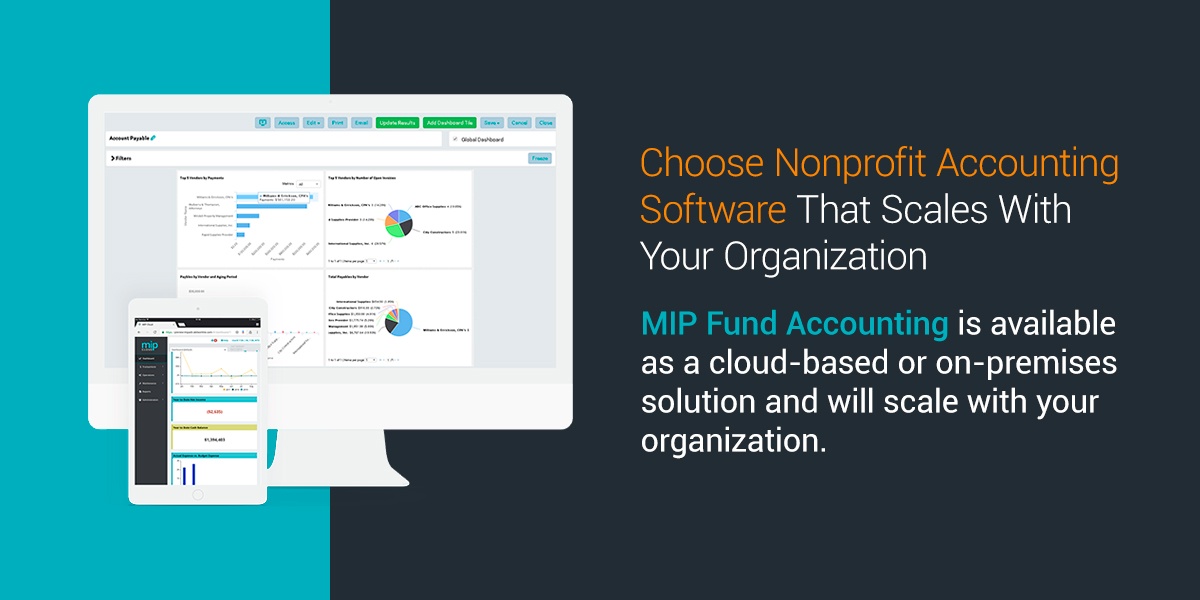Reading Time: 6 minutes
People tend to be more generous around the holiday season, whether donating canned goods to food banks, searching through closets to donate winter coats, hats and gloves or signing up to serve food to the hungry at soup kitchens. They also tend to open their wallets and purses to make more financial donations during the holiday season.
The influx of donations around the holidays can be a great thing for your organization, as the additional funding can help you reach your goals for the year and lay the groundwork for the year’s budget. When planning for holiday donations in 2020 and how you’ll account for them in 2021, it’s important to prepare adequately.
Your organization needs accounting software that scales with donations to keep track of who has donated what and where the money comes from. Having good donation records is particularly important if a donor has offered to match donations received. Here’s what you can do to streamline the funds you received in Q4 of 2020 and fundraising throughout 2021.
Holiday Giving in 2020
It’s likely your organization experienced higher-than-average giving throughout last year. Despite the challenges many individuals faced in 2020, for many, the year was a good one for charitable giving. On Giving Tuesday, which takes place the first Tuesday after Thanksgiving, people donated an estimated $2.47 billion — 25% more than what was donated in 2019. A feeling that the world is “in this together” could be behind the jump in holiday giving in 2020.
Another factor that could contribute to the increase in donations is a new tax deduction. The Coronavirus Aid, Relief and Economic Security (CARES) act added a new “above-the-line” deduction to Form 1040. Taxpayers who don’t itemize their deductions can claim a deduction of up to $300 for charitable donations made in 2020.
Preparing for Holiday Donations
You can prepare for the holiday giving season and encourage people to give in several ways. Many of the techniques you can use to encourage donations around the holidays also work throughout the year:
1. Announce Matches
During the holiday season, it’s common for a generous donor or two to offer to match donations received up to a certain amount. A matching or challenge campaign means that every dollar people donate gets doubled or even tripled. The promise of making their donation worth twice as much, if not more, is often a motivation for people to give. If you have a matching campaign going on, make sure to announce it to your donor base and the community at large.
2. Show How the Funds Will Be Used
Symbolic gifts tend to have more appeal during the holiday season. People like to give knowing that their $30 will help buy a flock of geese for a farmer or that their $50 will buy school books for children. Come up with ways to tell the story behind the donations. Let people see how their money will have an impact.
3. Get Social
Social media can be instrumental when it comes to getting the word out about your holiday campaigns. You can use your organization’s social media presence to promote a matching donation campaign or to share stories about the impact donations have. You can come up with hashtags to promote your campaign or use existing ones, such as #GivingTuesday to amplify your message.
4. Make It Easy for People to Give
The easier it is for people to give you money, the more likely they are to do it. Include a “donate” button on your website’s front page, embed a donate link in any email you send out and use tools on social media to make donating money simple. For example, Instagram and Facebook have tools that allow you to accept donations from followers and fans. You might also consider using a text-to-donate service that lets people give money by sending a message to a dedicated phone number.
5. Consider Offering Incentives
If you’re concerned about people not donating to your organization, it can be worthwhile to consider incentivizing giving in some way. That can mean offering free holiday cards or a free gift with donations above a certain amount. Also, remember to send a thank-you message as soon as possible after the donation. If a person donates online, the message should go out right after their payment gets processed. Also follow up with a letter or card thanking them for their donation, which can act as a receipt for tax purposes.
Accounting for Holiday Donations
As a nonprofit organization, you likely use fund accounting to keep track of donations, grants and other gifts you receive. Fund accounting allows you to track what your organization has received and allows you to verify the donations have been used for their intended purpose. In some cases, money can only be used for one purpose, such as maintaining your building or constructing a new building.
If you have multiple revenue sources and those sources have differing restrictions, using nonprofit accounting software for holiday donations can help you ensure your organization remains in compliance. Fund accounting software also ensures you don’t miss a donation. When accounting for holiday donations, especially if you receive an influx of donor dollars around this time of year, there are a few things to keep in mind.
1. Create a List of Donors
Every donor who gives your organization money, whether they are an individual or corporation, should have their own record in your accounting software. Giving each donor a record allows you to track how much they give over the year and during the holiday season. It also makes it easy to update their donation record and follow up with them if you notice a drop off in donations.
Having a list of donors also helps streamline the process of sending donation acknowledgment letters. Your organization must send donors a disclosure statement for quid pro quo donations of more than $75. For example, if someone gives your organization $100 and receives a T-shirt valued at $25 in return, their actual charitable donation is $75. Your organization also needs to send donors who contribute more than $250 a letter acknowledging the donation. Donors need to receive the letter before they file their tax returns to claim the charitable donation deduction.
Fund accounting software helps you stay up to date on your donors so you can send these acknowledgment letters in a timely fashion.
2. Account for In-Kind Donations
While many donors will give money during the holidays, some will make in-kind donations. An in-kind donation can be goods or services offered by a donor instead of cash.
A lawyer might provide legal services free of charge to a legal aid society, or a clothing store might drop off a large pile of garments to a transitional housing shelter. You’ll need to calculate the market value of these donations and account for them in your software. One way to do that is to find out how much the donations are worth. Ask the lawyer how much they charge per hour or ask the store what they would sell the clothing for.
In-kind donations risk getting lost in the shuffle since they aren’t cash and won’t appear on financial statements. It can be worthwhile to have a separate list for in-kind donations that you transfer to your accounting software regularly, such as every month or quarter.
3. Place Donations in the Right Bucket
Depending on the campaign, some of the money your organization received during the holidays might be restricted, meaning you can only use it for certain purposes. Some donors intentionally restrict their contributions, stating they want the money used for a specific purpose. Some donors expect their contributions to go into a fund, such as an endowment, where they are held in perpetuity by the organization.
When recording donations, make sure you assign them to the correct category or “bucket.” Donations received as part of a capital campaign should be labeled as such, for example. Those that are meant to go into an endowment should also be labeled accordingly. Current rules require any donation to be labeled as “with donor restrictions” or “without donor restrictions,” based on its status.
Choose Nonprofit Accounting Software That Scales With Your Organization
Your organization’s fund accounting software should grow with you and flex and change with your organization’s needs. Whether you received an influx of donations during the holiday season and end of the year or want to upgrade your accounting program to one that better meets your needs, MIP Accounting® is designed specifically to serve nonprofits. MIP Accounting is available as a cloud-based or on-premises solution and will scale with your organization. Request a demo today to see it in action.






